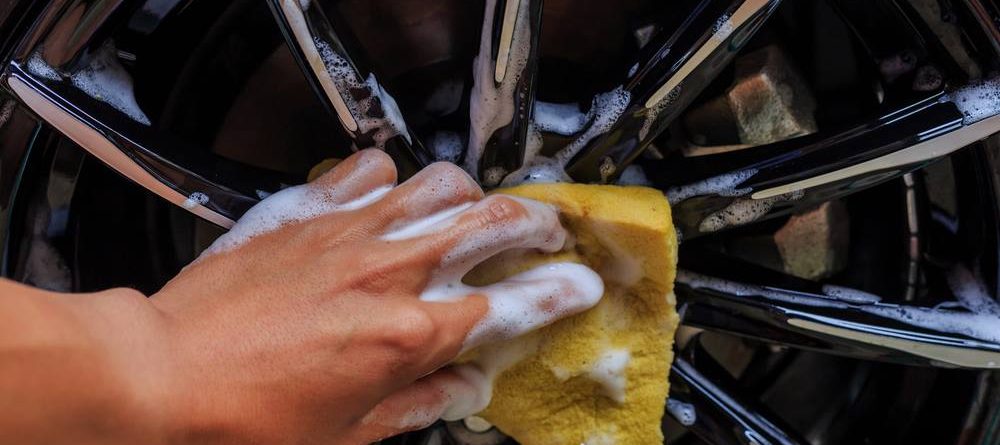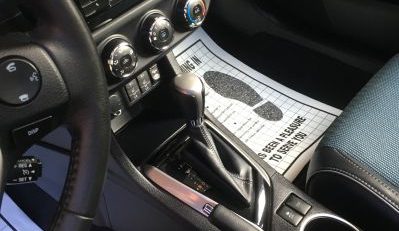Detailing Wheels and Tires. Step by Step Guide
Wheels and tires are important components of your vehicle and cleaning these offer both aesthetic boost and preventative maintenance. Brake dust is one of the most common and aggressive cleaning issues affecting tires and wheels as this dust type is usually a combination of carbon fibers and adhesive produced from the brake pad or the rotor’s minute metal shavings. When left unaddressed for a longer period, brake dust pits the metal and eats into the coating.
Brake dust adhesive and carbon fibers are highly corrosive to the vehicle when friction and intense heat is eventually generated while the wheels are operating. Moreover, the more frequently you drive your vehicle, the more brake dust is produced. Keeping the wheels safe is only possible with constant and frequent cleaning. Invest in tools and resources such as wheel and tire cleaning and care kits and follow the following instructions:
DIY Step-by-Step Guide to Wheel Cleaning
Doing it right means knowing where to start for your cleaning activity. Start at the bottom and go up as your progress.
Step 1:
The first parts you should wash first are the tires and wheels. Cleaning these areas avoid splashing onto overspray or grime on the clean panels. It is better to utilize a rinse bucket, separate wash, and a brush with softer bristles when washing the tires and wheels with water and soap.
Step 2:
The wheel type of your vehicle is an influential factor in choosing the appropriate cleaner. Wheels that are made from roughcast aluminum and chrome withstand even the strongest of cleaners compared to anodized, coated, and painted wheels. Check the label of the cleaner and see if it is suitable for the type of wheel you will use it on. If unsure of your wheel type, it is better to use cleaners that are formulated for all types of wheels.
About Multi-Purpose Cleaners
A preferable choice of cleaner is the multi-purpose type which is ideal for tires and wheels alike. There are gel formulations that are designed to cling to wheel and tire surfaces, making it easier to penetrate underneath for comprehensive cleaning. Gel formula loosens brake dust especially in hard to reach areas such as the rubber pores or those minute holes in the metal. You only need to apply a little agitation using a brush in order to make the cleaner work.
Cleaners with Stronger Formulation
Caked-on brake dust or wheels that have not been cleaned for months, even years, should be applied with a much powerful wheel cleaner. Concentrated wheel cleaners have professional-grade formulation with stronger effects but without butyl ethers, caustic acids, and other harmful detergents. Most of these cleaners are easily diluted in water for easy and effective maintenance cleaning.
Dealing with Brown Tires
Caustic degreasers cause brown tires especially when this cleaner is utilized to clean them up or the tire is not protected with an appropriately formulated tire gel. Tire rejuvenators get rid of tire grease and browning offering them a dark black finish. The antiozonant, UV absorber, and rubber conditioner contents of tires make them more flexible but the wrong cleaner could cause these contents to leach out, resulting in discoloration, browning, and cracking.
The Ideal Cleaning Brushes
The most effective and highly recommended tire and wheel brush is the one with feathered bristles for the wheels and a much stiffer brush to comprehensively scrub the rubber. Apply an elbow grease into the tire especially if the tires have old dressing layers. Scrub off these layers as they make the tires look worn out. Low profile tire brushes work best for tires with the same low profile features. Stiff nylon bristled brushes penetrate the nooks and crannies of the sidewall of your tires, getting rid of the stubborn road film and tire protectants. Brushes with curved handles minimize hand fatigues and offer maximized scrubbing power.
Step 3:
Clean up your wheels and tires, a single set at a time. This interval prevents the cleaning solution from drying out. Use a strong jet of water in washing and rinsing the vehicle components, particularly the tires, before you move on to the next.
Step 4:
Dry the wheels using a high-quality car detailing towel or terry cloth towel. Use this exclusively on the wheels and not on any other components of the vehicle. Take note that the towel should be solely used on the tire or wheel once you have used them there. Prevent water spots and remove brake dust residues through comprehensive drying.
Step 5:
Wax your wheels after they are totally cleaned and dried. A high-quality wheel protectant seals the wheel surface and works exactly like a car wax. Use an applicator pad to apply the protectant on the wheel, then buff. The formulation makes wheels shiny while preventing brake dust adhesion and keeping the wheels cleaner for a longer period of time. The product effectively keeps your wheels in top condition if you reapply it on a weekly basis. However, much better results are guaranteed when scrubbing every two days.
Other Options and Alternatives
Coating your wheels is another alternative specifically in blanketing the wheels and making it impenetrable and protected from ferrous particles from brake dust, tar, oil, and road salt. Most wheel coatings are also formulated to prevent laborious cleaning while eliminating brake dust buildup.
Directions for Wheel Coating/Waxing
- Make sure the surface is cool and protected from direct sunlight before application.
- Clean each wheel thoroughly first, using a high-quality concentrated cleaner.
- Use a cleansing polish formula to polish the wheels.
- Directly spray the wheel coating onto the wheel and evenly distribute over the area.
- Work the coating until it finally disappears into the surface.
- Use a lint-free, soft, and clean micro-fiber towel to lightly buff the wheels.
Step 6:
Go for a top-of-the-line tire dressing avoiding any old formulas that contain silicone as it produces glossy shine but could eventually become brown over time. Low-quality tire dressings deplete the protectants of the rubber much faster thus opt for a less shiny and water-based tire gel. These tire dressing products are formulated to create semi-gloss sheen, making your tires look new. It nourishes the rubber and restoring the new condition of the tires. Water-based dressings could also be layered in order to achieve a glossier shine.
Tire dressings are protective measures against UV rays and the effects of UV on your tires, making them dry, cracked, and faded. With the right tire and wheel detailing, your vehicle will look sharper and better in no time!










